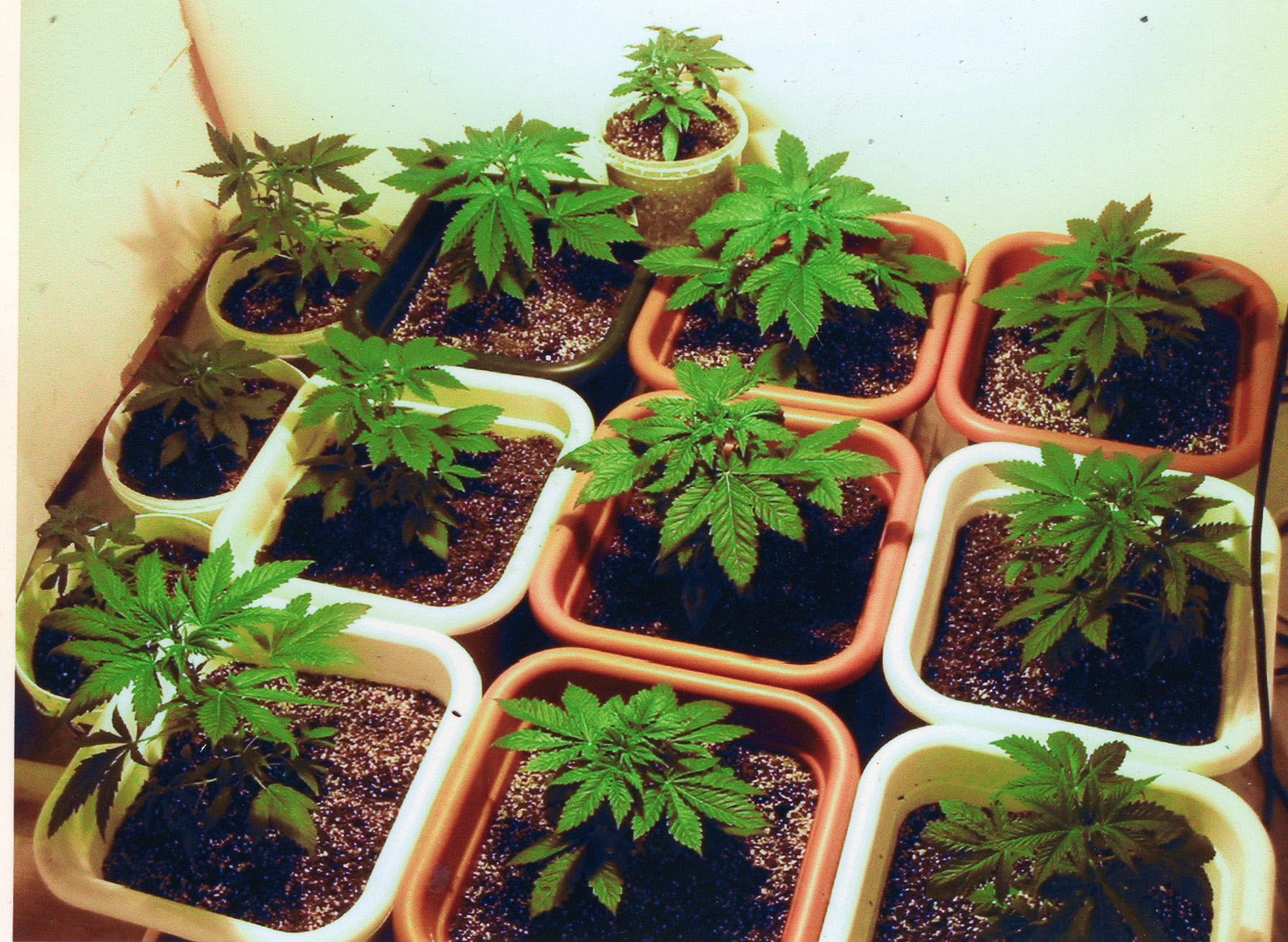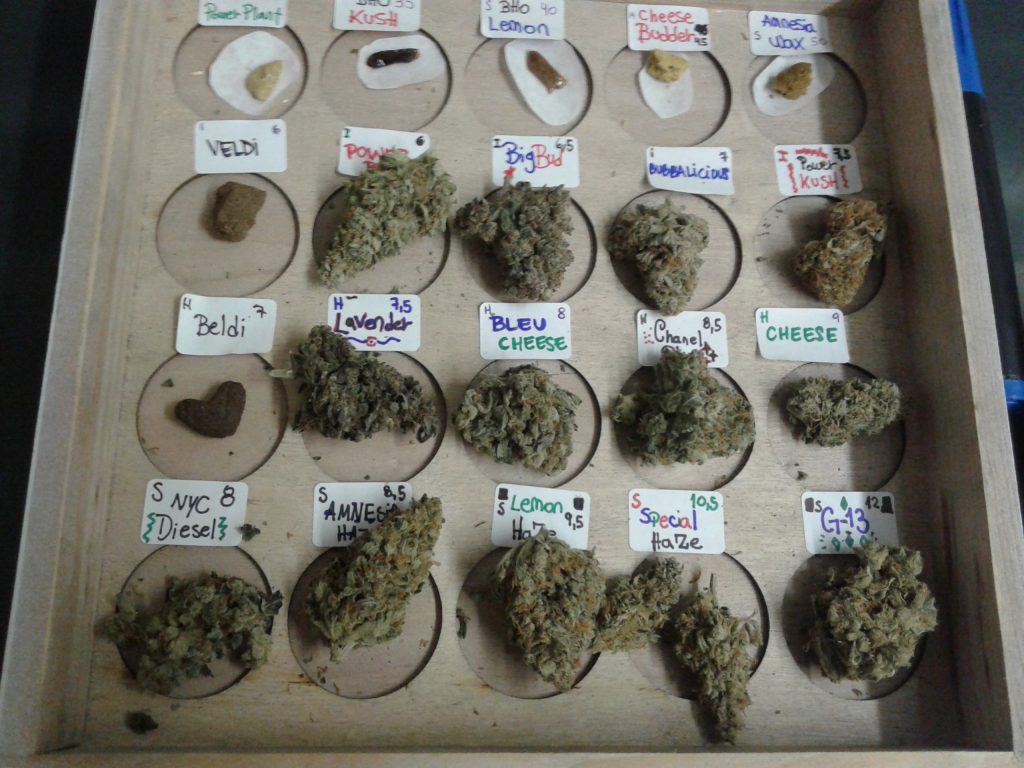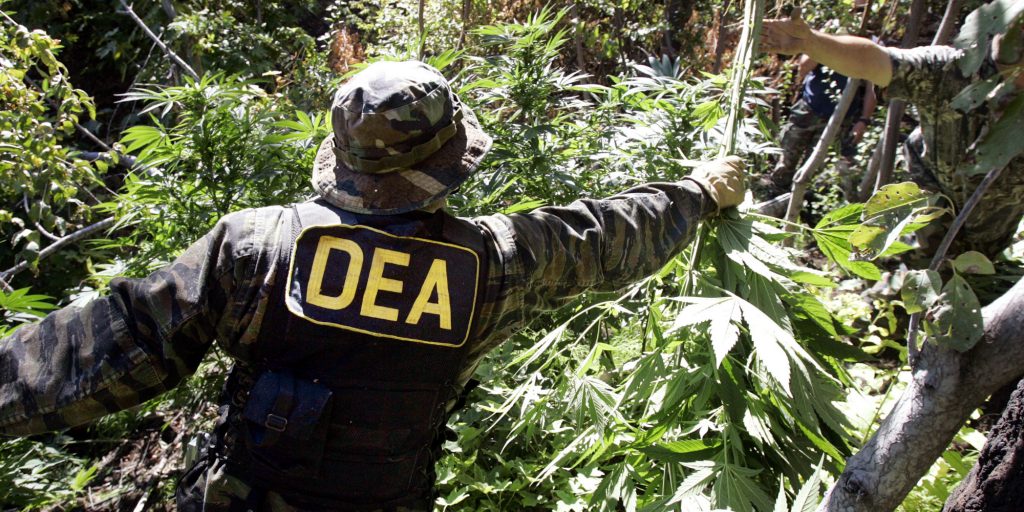Many countries around the world are moving towards a legally regulated cannabis market. But what can we learn from them about the implications of cannabis legalisation? What are the different models available to those looking to draft legislation? What mistakes have been made by the pioneers in this area that we can learn from?
These are questions that are addressed in the latest edition of the International Journal of Drug Policy, published last month. The journal contains a variety of articles and studies examining specific consequences of cannabis policy reform, from levels of consumption to pesticide regulations. The editorial, entitled ‘Advancing knowledge on cannabis policy, using evidence from North America’ gives background to the debate and offers a neat synthesis of the content of the journal, most of which were taken from research presented at a conference in April last year run by the International Society of the Study of Drugs Policy (ISSDP).
The first author of the editorial is Alex Stevens, President of the ISSDP and member of the UK Advisory Council on the Misuse of Drugs. He is also a Professor in Criminal Justice and Deputy Head of the University of Kent’s School of Social Policy, Sociology and Social Research. Volteface spoke to Stevens about his editorial, the studies in the journal, what we have learned so far about the potential consequences of legalising and regulating cannabis and the possible impact of this evidence on future policy.
Firstly, it’s important to point out that it is very difficult to know what the long-term effects of a regulated cannabis market would be. Those countries and states that have legalised cannabis have only done so in the last few years, so on the whole it is too soon to get a handle on the myriad of different consequences. Having said this, we can reflect on what has happened so far and on various projections for the future when considering what the best model of legalisation would be.
Stevens has previously looked at the use of evidence in drug policy, its importance and how much it is really used. He told Volteface “[Evidence] is important, but more often for ammunition than enlightenment.” He explained that evidence is selectively used to back up policy preferences that already exist, so it is often used to refer to but rarely to change minds. He added: “People will select from the wide range of evidence that is available to them by finding bits of the evidence that support what they already want to do. And those things that they want to do are in line with their moral preferences”.
Despite this selection bias however, gathering evidence is important for advocates and policy makers alike, as it is the only way we can have an idea of what might happen if cannabis were to be legalised. Although Keith Humphreys argued that evidence should not be the only driving force of policy and that values also have a legitimate place in the decision-making process, evidence is widely considered to be a vital aspect to consider.
To gather this evidence, we can look at how the US has implemented regulation in Colorado and other states and understand what the advantages and disadvantages of their system are. For example, the economist and mathematician Jonathan Caulkins has argued that the most significant consequence of legalising cannabis under a free market model seen in the US would be the dramatic increase in the number of hours of intoxication of citizens, which would in turn result in a less productive society. In his article in the journal ‘Recognising and Regulating Cannabis as Temptation Good’, he likened the situation with cannabis to alcohol prohibition in the US.
Alcohol prohibition in the 1920s did succeed in suppressing alcohol consumption and associated health harms, such as liver disease, which rose again after prohibition was lifted. However, it is unclear whether cannabis is directly analogous to alcohol and whether the UK today is analogous to America nearly 100 years ago. That said, the alcohol business is not very strictly regulated, especially when it comes to things like branding and advertising, so it is a valid concern that the US has not learned the lessons from alcohol and perhaps the model of regulation seen in Colorado could be improved. However, any regulation regarding age limit is likely to reduce underage use, which has been backed up by the reduction in teen use in states that have legalised cannabis.
Caulkins said: “We should not be surprised if, after markets have matured and consumption patterns stabilized, legalization increases acute cannabis intoxicaton in the US by 40 billion hours per year.” He argues that most of the cannabis smoked in the UK is smoked by problematic users and that increased use would also mostly come from these people. This would harm them and their families and have a performance degrading effect. However, if you are already smoking cannabis daily, why would you do it more if it was legal? Clearly the legal status is not a deterrent for them, so perhaps it is the cost.
When asked whether he considers Caulkin’s prediction to be a realistic one, Stevens said: “[Caulkins] models things by the maths. So I think there is a genuine prospect that if cannabis were to be legalised according to the free market model the price would tumble, and with lower prices the use would tend to increase and the harms related to that would therefore increase. And included in that harm would be people’s motivations to work being damaged. Now whether you can model it as precisely as [Caulkins] thinks you can is a different matter, but the danger is clearly there that if you allow price falls and advertising you will get increased use and health harms related to that use.”
The potential risk of increased consumption due to legalisation could perhaps be tackled by having tighter restrictions on price and advertising. Current regulations regarding alcohol are fairly loose, so it may not be a good model to emulate. However, Stevens pointed out how difficult this can be, particularly in the US where you have to contend with the idea that commercial speech is free speech and therefore pretty strong reasons are needed to limit advertising. He also referenced the “ingenuity” of people who want to advertise for getting around advertising regulations through various loopholes and innovative ideas.
The danger in this situation would be to give cannabis companies too much power. Industry giants would have a vested interest in getting more people to smoke cannabis and even in creating more problematic drug users. Carnavale et al (2017) looked at Colorado and Washington and recommend that, when drafting legislation, it would be wise to implement very tight restrictions that would be loosened if appropriate. Once the genie is out of the bottle, it is very difficult to shove it back in. That is why some would argue that a more public-health based model would be better than a free market “American” model. Because the lobbying powers of big business can be so significant, legislation would have to be carefully written so that companies cannot simply lobby the government to have the strict regulation loosened and have powers increasingly handed over to the industry.
Another problem that has arisen in the US is regarding the health and safety regulations, especially that of pesticide use. Subritzky, Pettigrew and Lenton (2017) believe that this is a significant public safety concern. The pesticide use in Colorado, for example, has been shown to be problematic and there are a number of difficulties with regulating it. There have been plenty of controversies since legalisation where companies have been found to be spraying toxic chemicals on plants and having to destroy vast cargos, but not before people have been smoking the dangerous products for several months. Moreover, concentrated cannabis products like wax and edibles have 10x the amount of pesticides as that found on flower heads. The cannabinoid extracting process that creates high THC products actually intensifies the level of pesticides.
However, the introduction of standardised testing is difficult given the variation in federal and state laws, intellectual property issues and different strains of the plant. Therefore, when considering legislation it is important to think carefully about product safety regulations from the start. These issues of advertising, consumption and public safety are not necessarily arguments against legalisation, rather they are factors to consider when designing what an ideal legally regulated market would look like and under what regulations companies and governments would need to operate.
But how relevant to the UK is any of this evidence from across the pond? Whilst north America seems to be moving towards a model for cannabis that is similar to that of alcohol, allowing for-profit corporations to produce and sell, the European models that are popping up are more diverse and less commercial. For example, in Spain and Belgium there is are cannabis social club models growing, where people are setting up organisations and co-ops for growing and selling cannabis with state semi-inaction. Meanwhile, the Netherlands has had cannabis coffee shops for years, but experience the “back-door” problem where the coffee shops have to source their produce from criminal gangs. Portugal has opted to decriminalise all drugs and is showing positive results of this so far, but again, suffers from a lack of regulation. These European movements, rather like areas of the UK where the police have decided not to pursue cannabis users, are producing cannabis markets that are semi-legal rather than referenda which make it legal like in the US.
This is a crucial difference because, unlike the US, where states can generally decide these things for themselves, in the UK there is no referendum system at a local level which could get cannabis legalised when the national government is reluctant. This makes it a lot harder for the legalisation movement to have a tangible impact on the law.
The American and European models, being so different, have different consequences to consider. In Europe, where decriminalisation is more common than legalisation, the lobbying power and advertising of companies is very limited, which may reduce some potential harms, but what about quality control, accurate labelling and access to treatment services? Stevens said:
“I think it will minimise some harms but maximise others. So, for example, the Dutch system at the moment minimises some harms – you’ve got rid of the fear of arrest – but you haven’t got rid of the harms of the organised crime. And there have been associated harms of that including some violence, but mostly it’s the dangerous working practices. So, there is no harm-free market for either licit or illicit drugs. You get to choose some of the harms that you have.”
In this way, you have to choose what to sacrifice and this will usually reflect the different priorities in the US and in Europe. The referenda system seen implemented in the US, despite being responsible for positive regulatory changes, does have its downfalls. [Ballot initiatives] are usually designed so that they are more likely to pass rather than to produce the best end result. Due to this the views of the less-informed population take precedence over experts on drug policy.
Vermont has taken a different approach to Colorado and the other seven states that have legalised cannabis in that it has attempted to legalise through the legislature rather than via a referendum. In 2014, a report was commissioned to look at the different options in legalisation and what the consequences of those would be. A bill was then drafted along the lines of a commercial model and in 2016 it passed through the Senate, but was overwhelmingly rejected by the House. Since then, the House has drafted a bill similar to the system in Washington DC, where adult possession and small-scale home-growing is allowed and while it passed through various committees, work on the bill came to a halt. On April 21st this year, the Senate voted to amend a separate bill to include comprehensive legalisation and regulation. It remains to be seen what will happen in this regard.
A further problem observed in the US and elsewhere is the issue of contradicting and clashing laws. For example, Colorado has the problem of a medical cannabis system running in parallel to the recreational cannabis system, which causes a number of potential problems. There are organised crime routes with people setting up medical cannabis licences, which allow them to grow up to 99 plants, collecting it and transporting it out of state. This is one of the problems with setting up a medical cannabis system and then a recreational cannabis system, rather than building the whole thing from scratch. What we can learn from this is that there needs to be a conscious effort to set up a mechanism whereby the cannabis laws can be reviewed and amended. This can be difficult with the referendum model, because to amend it there needs to be another referendum, which is not a small task. So when designing legislation, it is not only important what the content is but the process by which it can be reviewed later, because you are unlikely to design it perfectly the first time.
Another contradiction is that while more and more states are passing laws to legalise cannabis, US federal law is clear that it is still illegal nationwide. On the whole, the Federal Government will respect the autonomy of states to legislate how they see fit on these matters and the Attorney General under Obama certainly allowed state-level cannabis regulation to occur. However, it is well within the rights of the Federal Government to instruct the Drug Enforcement Administration to crack down on cannabis. It has also been observed that people’s right to live in the US is sometimes revoked for legally smoking cannabis in their state, because they are breaking federal law. This occurred under Obama, but has increased under the Trump administration.
Is this an indication of how the new US government sees cannabis and its legalisation? Stevens argues: “It might be more of an indication of socioeconomic inequality in the latest state of drug laws and that is what my project is about – helping people see that drug laws are not about the harms of drugs, they are about the people who have got interests in controlling other people”. And the worry is that with legalisation, the power would simply shift from criminal gangs to big business – “the power is always the same, just the name changes”.
Related to this perhaps, is the question of whether the spread of cannabis legalisation is inevitable, or whether it could be stopped by a figure such as Trump. Jonathan Caulkins believed, in April last year, that legalisation of cannabis would spread from state to state. Nearby states would experience the harms from people bringing cannabis across state borders, but none of the benefits, from tax for example. Therefore they will start to see regulating as better, even if there is no central movement towards reform. However, recent political developments such as the election of Donald Trump as president has the potential to change things, just how political developments in the 1970s halted the spread of decriminalisation. Donald Trump aside, the Republican Party in general is often stuck between their desire to uphold prohibition and their desire to respect the right of states to make their own laws.
Stevens acknowledged the merits of this “Schelling-esque” idea that a domino-like effect is inevitable, because countries or states bordering others that have legalised start to see the benefits of cannabis regulation (and get dollar signs in their eyes). They are also already being affected by the harms caused by such easy access to cannabis by their citizens. However, he added that it can also work against places with more liberal cannabis laws. For example, the Netherlands often experiences pressure from nearby countries to get tougher on their own market. Plus, he said: “It’s not just connected on rationality, it’s what are the politics, what are the moral preferences of people? Some governments, including our own, have populations with strong moral preferences for other people to abstain and to be seen to be in favour of other people abstaining.”
This perverse moral objection to cannabis that Stevens references is definitely a strong barrier to legalisation in this country and may override any influence that the Netherlands or other countries have on us. The idea that freedom of movement increases access to cannabis if nearby countries legalise is also mitigated by the fact that we are an island and may soon be leaving the zone of freedom of movement as well. In the meantime, we need to look both outwards at how other countries are progressing in terms of drug policy reform, but also look inwards at the attitudes we have towards drugs and the people who use them.
Essentially, it is too soon to tell if any of the methods of regulation are providing the desired result and it will be years before we know the full implications of legalising. However, it is important that there is an ongoing gathering of evidence – even if it is not yet having a direct impact on policy. This is why Stevens and other researchers mentioned are key figures in this field, coming at this issue from a non-partisan perspective. All the studies and articles in this journal show that it is possible to collect good quality data on the effects of cannabis policy and should encourage further research.
When it comes to confronting governments on drug policy and providing the best legislative framework for reform, it is just as important to discuss how cannabis is going to legalised as it is whether it is going to be legalised.
Words by Abbie Llewelyn. Tweets @Abbiemunch






